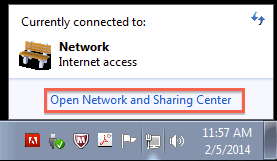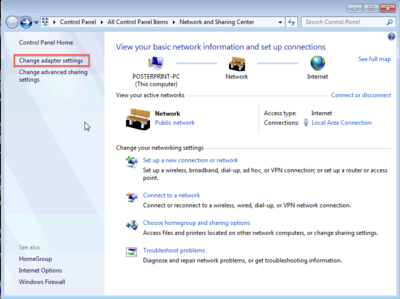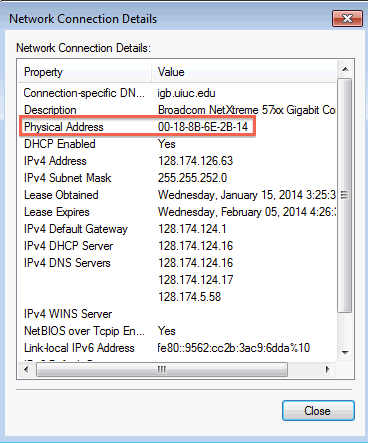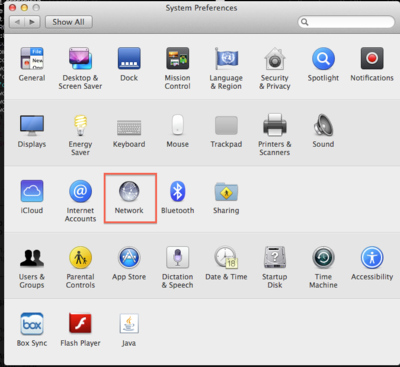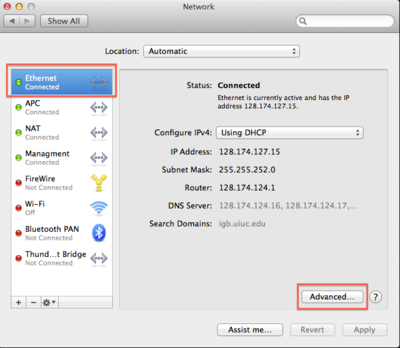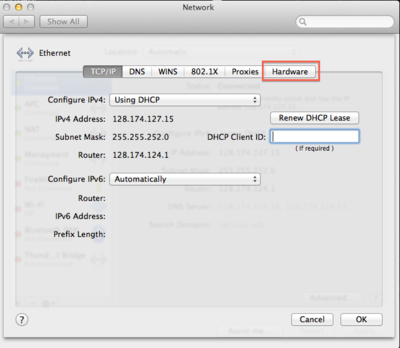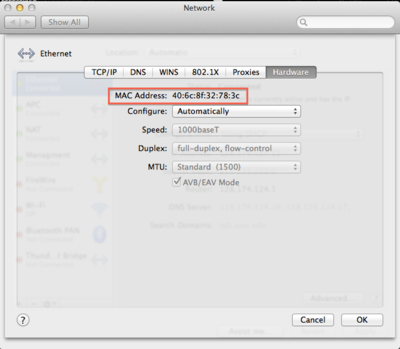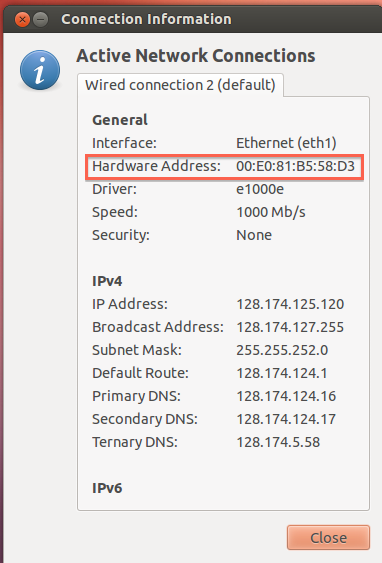Hardware Address: Difference between revisions
Jump to navigation
Jump to search
No edit summary |
|||
| Line 61: | Line 61: | ||
*In the left column, choose "Change Adapter Settings" | *In the left column, choose "Change Adapter Settings" | ||
[[File:Win10HardwareAddress2.png| | [[File:Win10HardwareAddress2.png|400px|Win10HardwareAddress2.png]] | ||
*Double-click the Ethernet Connection | *Double-click the Ethernet Connection | ||
| Line 75: | Line 75: | ||
[[File:Win10HardwareAddress5.png|400px]] | [[File:Win10HardwareAddress5.png|400px]] | ||
</div></div><div class="toccolours mw-collapsible mw-collapsed" style="width:900px"> | </div></div><div class="toccolours mw-collapsible mw-collapsed" style="width:900px"> | ||
=== OS X === | === OS X === | ||
<div class="mw-collapsible-content"> | <div class="mw-collapsible-content"> | ||
Revision as of 14:42, 10 September 2018
How to Find Hardware Address
- Make sure your Ethernet cable is plugged in while completing these steps
- Hardware address can also be referred to as Mac Address or Physical Address
- Use the steps from the appropriate section below to find your computer's Mac Address
Windows 7
Windows 8
- On the tile screen, select the desktop tile
- In the lower right corner, right click on the network icon and choose "Open Network and Sharing Center"
- In the left column, choose "Change Adapter Settings"
- Select the Ethernet Connection
- Click on "Details"
- The MAC Address is the "Physical Address" listed in the table
